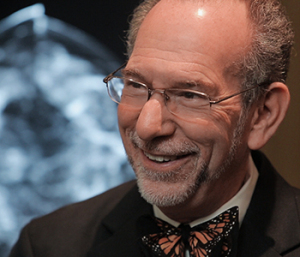por
Lauren Dubinsky, Senior Reporter | December 02, 2016
Dr. Michael N. Linver, adjunct professor of radiology at the University of New Mexico, made a passionate case against the U.S. Preventive Service Task Force's mammography screening guidelines at RSNA.
"Early and tragic death from advanced breast cancer seems to me to be a greater harm than all of the harms [associated with mammography] combined. Call me crazy, but that's just the way I think," Linver said in a session on Wednesday.
In January,
USPSTF issued its final guidelines for breast screening, which recommend that women between the ages of 50 and 75 with average risk for breast cancer should get mammograms every two years.
Organizations, including the American College of Obstetricians and Gynecologists and the American Cancer Society did not agree with the recommendations.
In his presentation, Linver explained that there were no radiologists, surgeons or pathologists on the Task Force and that they were heavily influenced by epidemiologists.
The Task Force stated that there is only a 15 percent mortality reduction associated with screening women in their 40s and that the harms of screening that age group exceed the benefits.
Linver argued that there is a much higher rate of mortality reduction and that even if there wasn't, the 15 percent of women still matter. He also disagreed with what the Task Force considers harms.
"If they are recalled, there is anxiety, as there would be for any test in medicine — what's unique about mammography, I don't know," he said. "It's usually transient and not very extreme."
He did acknowledge that over-diagnosis can be an issue with mammography, but that screening still needs to be done in order to find the malignant tumors.
"The average cost of taking care of a woman with breast cancer in the U.S. is $250,000, and many of them die even in the face of all of that extra expense," he said.
A Swedish study published in 2010 investigated breast cancer mortality rates of women screened starting at age 40 and those screened starting at 50. The researchers found that there was a 29 percent decrease in deaths from breast cancer in the first group.
In August, a few members of the House and Congress put a two-year moratorium called the Protect Access to Saving Lives Act on the guidelines to preserve annual screening starting at age 40. However, it expires in December 2017.
In October, a coalition of patient groups and breast cancer experts went to Congress to protect a mandate of the ACA that requires insurers to cover annual screening starting at age 40.
"We're hoping this is going to happen, but we still need to fight back," said Linver. "Everybody in this room needs to do something about it if you care about women's lives. We have to contact Congress and let them know the true facts."
